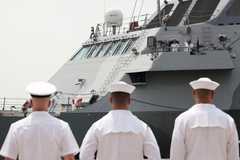USS Freedom / Singapore
Liberty Belle
On deployment far from its home port of San Diego, the diminutive USS Freedom carries far greater weight than its size suggests: as the apex of US naval technology, its success or failure will decide the future of American sea power.
The warship cruises with ghostly stillness out of the haze of the South China Sea. With four-tone camouflage and the sleek profile of a luxury yacht, it lurks half-seen on the muggy horizon before making its final approach. This is the USS Freedom, the first of a new generation of American naval vessel known as the Littoral Combat Ship (LCS), reporting for its maiden overseas deployment, an eight-month rotation through Singapore.
A new US warship has not generated this much buzz in a long time. The Freedom is the standard bearer of the American pivot to Asia: a signal to both friends and rivals (namely China) that Washington is serious about committing its newest military assets to the region. This moment is doubly loaded with significance because the ship is set to become a central pillar of American sea power. Over the next 30 years the US Navy plans to acquire 52 LCSs, forming a sixth of the total fleet and making the type critical to the global US military presence well into the century.
The Freedom is a relatively small warship designed to address a perceived weakness of the US navy, which until now has fielded large ocean-going warships, tiny coastal patrol craft and not much in between. At 3,500 tonnes it combines – in theory – the clout of a frigate with the nimbleness of a coastal craft thanks to an extremely shallow draft (the depth at which the ship sits in the water) of just 3 meters, compared with a frigate’s more restrictive 11 meters.
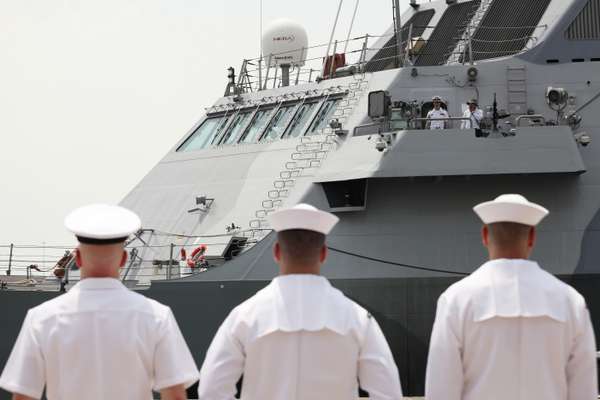
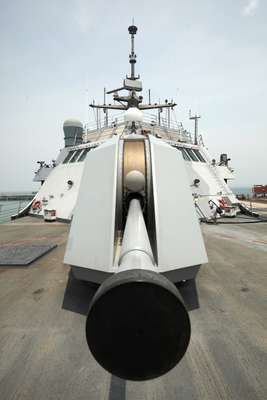

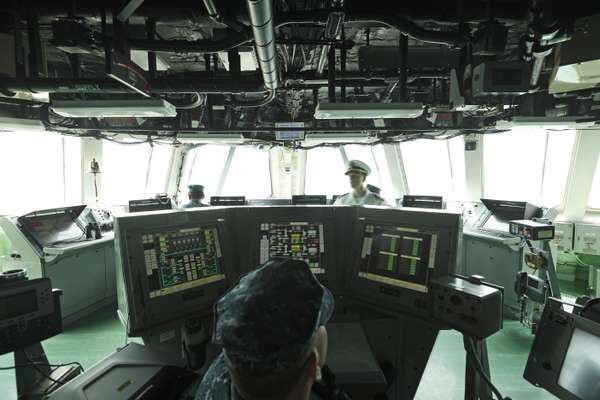
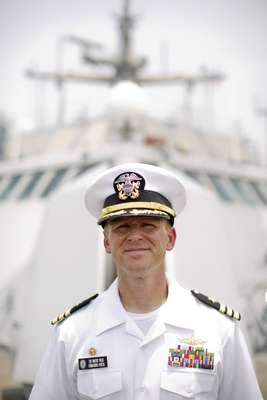
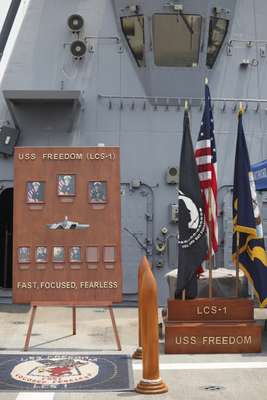


But the jury is out. lcs champions laud the ship’s new technologies and operational concepts; but detractors fear the Navy has been too clever for its own good, creating a vessel – known in critical circles as the Little Crappy Ship – with innovations that will count for little when the shooting starts. For a warship, they say, lcs weapons systems are underpowered (it has no land-attack missiles, for example, despite operating just offshore) and it lacks the armour to survive a major hit. At $440m (€337m), they argue, it is grossly overpriced for a speedboat-chaser that will be arresting drug smugglers and pirates rather than balancing China’s rising naval power. Even the Navy leadership is wavering: contracts have been signed for only 24 of the planned 52 ships.
Aware of the on-shore debate, Commander Timothy Wilke acknowledges the pressure but doesn’t feel it has made his job as commanding officer any more complicated. “This deployment has been different, I’ll say that,” Wilke accepts. “But then every deployment is different somehow.” In his crisp dress uniform, he looks remarkably fresh for a commander at the end of a 13,000km voyage during which every hiccup and boiler-room glitch has been pored over by the media.
CDR Wilke prefers to extol the virtues that, the Freedom’s Navy cheerleaders believe, make his ship a model of innovation. It is avowedly hi-tech: uniquely for a US warship it has no propellers or rudders, instead using a propulsion system that shifts enough water to fill an Olympic swimming pool in three seconds; navigators rely entirely on GPS and other electronic aids. The Combat Operations Centre is similarly futuristic, a windowless cavern in the heart of the ship where technicians monitor radar panels and control the ship’s guns with joysticks.
An lcs has 90 personnel compared with 200 on a frigate, so living quarters are more generous and in the wheelhouse just three people, not nine, pilot the ship. “We have very good crew comforts,” Wilke says, smiling, despite losing some of his own perks. “In our mess hall everyone self-serves and washes their own plates – even the captain,” he says, nicely selling this as progress and not a personal hardship. The minimalism clearly boosts esprit de corps, with each sailor acutely aware of the elevated importance of his role. “There’s a lot more responsibility, we’re doing the same amount of work but with fewer people,” says Gunner’s Mate 1st Class Matthew Dick, one of two crew on the ship’s Bofors Mk-110 57mm cannon, with programmable shells configured according to their intended target.
Actively deployed, the Freedom can now begin to answer the questions about the LCS programme’s future. It’s unlikely the ship’s combat capability will be tested but its every move will be analysed in unforgiving detail as the Navy considers whether it has created a 21st-century template for operations or simply indulged in a costly experiment whose continuance could undermine American power.
Strengths…
Fast (with a top speed of over 40 knots) and highly manoeuvrable, thanks to water-jet propulsion system.
Able to operate in shallow coastal waters, unlike other warships.
Flexible mission packages.
Small crews that work hard but rotate every four months.
Stealthy design helps the LCS evade detection.
…and weaknesses
Lightly armed for a warship of its size. No land-attack cruise missile system; an anti-ship missile system is due to be fitted later.
Doubts over the strength of the ship’s armour persist.
The relatively small crew could prove to be too few hands in a major crisis.
At €337m, the ship is arguably too expensive for the missions it will perform.

